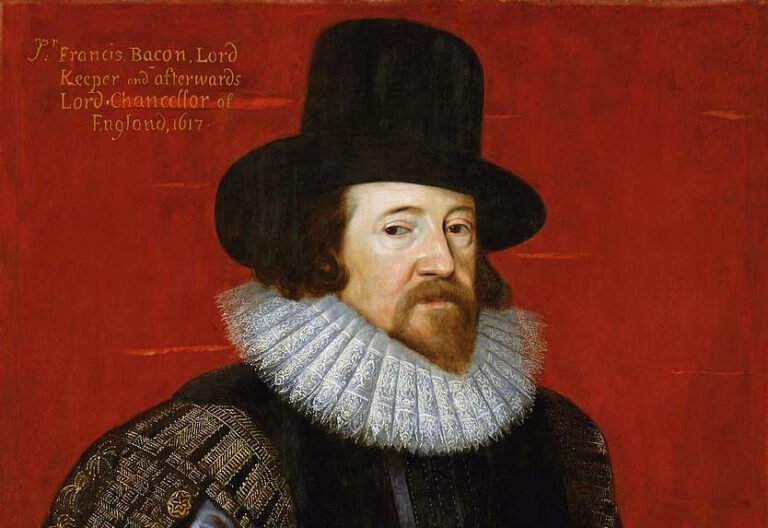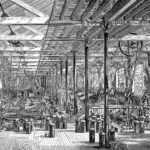The Great Plague of 1665 was a devastating event. It swept through London, leaving a lasting impact.
In the summer of 1665, London faced one of its darkest times. The Great Plague, a deadly disease, spread rapidly. This event changed the city and its people forever. Over 100,000 lives were lost, making it a significant historical event.
Fear and panic gripped the streets as the disease showed no mercy. The Plague not only affected health but also the economy and society. Understanding this event helps us learn about human resilience in the face of disaster. This blog will delve into the history, impact, and lessons from the Great Plague of 1665. Stay with us to uncover this crucial part of history.

Credit: www.rmg.co.uk
Origins And Spread
The Great Plague of 1665 was a devastating event in London’s history. Understanding its origins and spread can provide insight into how it affected the population. This section will delve into the early cases and the transmission routes that facilitated the rapid spread of the disease.
Early Cases
The first cases of the plague appeared in the spring of 1665. Many believe it started in the poorer districts of London. The disease quickly spread among families living in cramped conditions. The initial symptoms were mild, but they soon worsened.
A few early reports mentioned fever, chills, and headaches. Victims developed painful swellings known as buboes. These swellings were often found in the groin, armpits, and neck. The disease moved fast, and many died within days.
Transmission Routes
The plague spread through several transmission routes. One primary route was through flea bites. Fleas carried the bacteria from infected rats to humans. The crowded and unsanitary living conditions in London made this easy.
Another significant route was human-to-human contact. The disease could spread through respiratory droplets when an infected person coughed or sneezed. Poor hygiene practices further accelerated the transmission.
Trade and travel also played a role. Ships coming into London brought goods and people, some of whom were infected. This movement helped the plague reach new areas quickly.
Here is a summary of the main transmission routes:
- Flea bites from infected rats
- Human-to-human contact
- Respiratory droplets
- Trade and travel
The combination of these routes led to the rapid spread of the plague, affecting thousands in a short period.
Symptoms And Diagnosis
The Great Plague of 1665 brought terror to many. Knowing its symptoms and diagnosis is crucial to understand the disease’s impact.
Initial Signs
Early symptoms of the Great Plague often resembled the flu. People experienced fever, chills, and headaches. The fever was typically high, causing weakness and fatigue.
Another common symptom was swollen lymph nodes. These painful swellings, called buboes, appeared in the groin, neck, or armpits. They grew to the size of an egg or even an apple.
Victims also suffered from nausea and vomiting. Muscle pain and dizziness were prevalent. Some developed a rash or spots on their skin, which turned black.
Medical Understanding
In 1665, medical knowledge was limited. Doctors did not understand how the plague spread. They relied on observation to diagnose the disease.
Physicians noted the characteristic buboes. They also observed the high fever and rapid decline in health. Diagnosis was primarily based on these visible signs.
Doctors used various methods to treat the plague. Bloodletting and herbal remedies were common, though largely ineffective. They believed in balancing the body’s humors, a theory now outdated.
Quarantine measures were implemented. Infected houses were marked with a red cross. A “Lord have mercy upon us” sign warned others to stay away.
- High fever
- Chills
- Headaches
- Swollen lymph nodes (buboes)
- Nausea and vomiting
- Muscle pain
- Dizziness
- Skin rash or black spots
| Symptoms | Description |
|---|---|
| High Fever | Typically high, causing weakness and fatigue |
| Buboes | Painful swellings in groin, neck, or armpits |
| Nausea | Often accompanied by vomiting |
| Muscle Pain | Common symptom along with dizziness |
| Skin Rash | Rash or black spots on the skin |
Impact On London
The Great Plague of 1665 was a devastating event in London’s history. The city’s public health response was critical in fighting the spread of the disease. Authorities took several measures to protect the population.
Quarantine Measures
Quarantine was a key strategy. Infected households were marked with a red cross. This warned others to stay away. Guards were stationed outside to enforce isolation. Families could not leave their homes. Food and supplies were delivered to their doorsteps. This helped limit the plague’s spread.
Ships arriving in London faced strict checks. Any ship with sick passengers was quarantined. Ports had isolation areas for infected travelers. This kept the disease from spreading further.
Role Of Physicians
Physicians played a crucial role during the plague. They visited the sick and provided treatments. Many wore protective clothing, including masks and long robes. This was to avoid catching the disease themselves.
Doctors also advised on hygiene practices. They recommended cleaning homes and streets. Burning herbs was common to purify the air. These actions, though primitive, aimed to reduce infection.
Physicians also recorded symptoms and cases. This helped track the plague’s progression. Their efforts provided valuable information for future outbreaks.
Public Health Response
The Great Plague of 1665 had a massive impact on society. It didn’t just affect health but led to significant cultural and social changes. Communities had to adapt to new norms and beliefs. Daily routines and social behaviors transformed drastically.
Daily Life Disruptions
During the plague, daily life came to a halt. Markets closed, and trade stopped. People avoided public gatherings to prevent the spread of the disease. Schools and churches shut their doors. Families stayed indoors, scared to interact with neighbors. Fear and uncertainty ruled every aspect of life.
Travel restrictions were common. Authorities imposed quarantines to control the outbreak. Many areas became ghost towns. The normal hustle and bustle of life disappeared. People had to find new ways to survive and adapt to these disruptions.
Religious Interpretations
Religion played a huge role during the plague. Many believed the plague was divine punishment. Religious leaders saw it as a test of faith. Churches held special prayers and services. People turned to religion for comfort and answers.
Some believed that God was angry with humanity. Others thought the plague was a sign of the end times. This led to increased religious fervor. Many sought forgiveness and salvation. People hoped that divine intervention would stop the plague.
Religious interpretations shaped how communities responded to the crisis. They influenced daily decisions and provided a sense of hope. In a time of fear, faith became a source of strength.
Cultural And Social Changes
The Great Plague of 1665 struck London with unparalleled ferocity. The government faced immense pressure to contain the outbreak. This section delves into the measures taken by the authorities, highlighting the policies and leadership challenges during this grim period.
Policies Implemented
The government introduced several policies to curb the spread of the plague. Quarantine was a major strategy. Houses with infected individuals were marked with a painted red cross. These homes were locked up, and guards were placed outside to enforce isolation.
A system of searchers was established. These individuals were tasked with identifying and recording the number of plague victims. They also ensured that infected corpses were promptly removed and buried.
Public gatherings were banned to minimize contact between individuals. Theatres, markets, and other communal spaces were shut down. Streets were regularly cleaned, and bonfires were lit to purify the air.
| Policy | Description |
|---|---|
| Quarantine | Isolation of infected houses marked with a red cross |
| Searchers | Individuals identifying and recording plague victims |
| Public Gatherings Ban | Closure of theatres, markets, and communal spaces |
| Street Cleaning | Regular cleaning of streets and lighting of bonfires |
Leadership Challenges
The leadership faced numerous challenges during the Great Plague. Enforcing quarantine was difficult. Many people resisted isolation, hiding their sick relatives to avoid being locked up.
Communication was another major obstacle. The lack of a central communication system made it hard to spread information quickly. Authorities relied on town criers and written notices to relay instructions and updates.
Resource allocation posed significant problems. There was a shortage of medical staff and supplies. The government struggled to provide adequate care and support for the sick and their families.
Leadership also had to deal with widespread panic and misinformation. Rumors and false cures circulated, making it harder to manage the situation. Maintaining public order and ensuring compliance with policies was a continuous battle.

Credit: www.nationalarchives.gov.uk
Government Actions
The Great Plague of 1665 brought fear and tragedy. But it eventually ended. Understanding how it declined and life returned to normal is essential.
Factors For Decline
Several factors contributed to the decline of the plague:
- Improved Hygiene: People started to understand the importance of cleanliness. They cleaned their homes and streets more often.
- Isolation of the Infected: Authorities isolated the sick. This reduced the spread of the disease.
- Colder Weather: The colder months killed the fleas. Fleas spread the plague.
These factors combined helped reduce the number of cases.
Return To Normalcy
After the plague ended, life slowly returned to normal. Here’s how:
- Reopening of Businesses: Shops and markets reopened. People returned to work.
- Social Gatherings: Families and friends could gather again. This improved morale.
- Restoration of Services: Churches and schools resumed their services. This brought a sense of community back.
Communities worked together to rebuild their lives. Their resilience helped them move forward.
End Of The Plague
The Great Plague of 1665 remains one of the most devastating epidemics in history. Its impact on society was profound. This blog section explores the legacy and lessons from that dark period. We’ll dive into its historical significance and draw modern parallels.
Historical Significance
The Great Plague of 1665 struck London with ferocity. Thousands lost their lives in a matter of months. It was a time of fear and uncertainty. The plague reshaped the city’s structure and society. Houses were marked with red crosses. Quarantine measures were enforced strictly. This period saw the first use of public health measures. People learned the importance of cleanliness and isolation.
The aftermath of the plague led to significant changes. The population decreased drastically. This affected the economy and labor market. The event left a lasting mark on London’s architecture. Many buildings were rebuilt in the following years. The plague also influenced literature and art, capturing the horror and human spirit.
Modern Parallels
Today’s world has faced similar challenges. The COVID-19 pandemic brought back memories of the Great Plague. Lockdowns, social distancing, and face masks became common. These measures echo the past. The importance of hygiene and isolation was once again highlighted.
Like the Great Plague, COVID-19 impacted economies globally. Businesses closed, and unemployment rates soared. Society adapted to new ways of living and working. Technology played a crucial role in this transition. Video conferencing and remote work became the norm. The pandemic also led to advancements in medical research and healthcare systems.
Both events taught valuable lessons. Preparedness and rapid response are crucial. Public health infrastructure needs constant improvement. The lessons from the Great Plague of 1665 are still relevant today. They remind us of the importance of resilience and adaptation.

Credit: en.wikipedia.org
FAQs
What Caused The Great Plague Of 1665?
The Great Plague of 1665 was caused by the bacterium Yersinia pestis, which was spread by fleas on rats.
How Did The Plague Spread?
The plague spread through flea bites and contact with infected bodily fluids or contaminated materials.
What Were Common Symptoms Of The Great Plague?
Common symptoms included fever, chills, headaches, vomiting, swollen lymph nodes, and dark blotches on the skin.
How Did People Try To Prevent The Plague?
People used quarantine, wore protective clothing, carried herbs, and burned aromatic substances to prevent the plague.
Conclusion
The Great Plague of 1665 was a tragic event in history. It affected many lives and changed communities. People showed great courage and strength. The plague taught valuable lessons about health and hygiene. Understanding past events helps prepare for future challenges.
The resilience of humans during tough times is inspiring. Remembering such events honors those who suffered. It reminds us to stay vigilant and compassionate. History offers insights for a better future. Let’s learn and grow from it.








